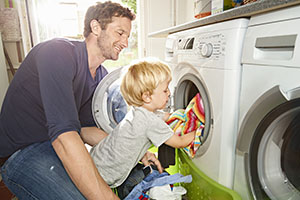 As the cleaning industry accelerates toward sustainability, ingredient innovation is driving the development of low-water and waterless cleaners. Concentrates, tablets, solid formats, and solvent-based systems all require high-performing actives that deliver cleaning efficacy without the traditional bulk of water. For formulators, this creates both challenges and opportunities in ingredient selection.
As the cleaning industry accelerates toward sustainability, ingredient innovation is driving the development of low-water and waterless cleaners. Concentrates, tablets, solid formats, and solvent-based systems all require high-performing actives that deliver cleaning efficacy without the traditional bulk of water. For formulators, this creates both challenges and opportunities in ingredient selection.
Here’s a closer look at the next-generation ingredient categories enabling this transition:
1. Next-Generation Bio-Solvents
Bio-based solvents are replacing traditional petrochemical options in waterless and concentrated cleaning systems. Unlike conventional solvents, these innovations balance performance, biodegradability, and safety.
Examples & Trends
- d-Limonene Derivatives: Powerful grease-cutting, sourced from citrus peel waste streams.
- Ethyl Lactate: Derived from corn fermentation, low toxicity, effective in hard surface and industrial degreasing.
- Methyl Soyate: From soybean oil, useful in heavy-duty degreasing and parts cleaning.
- Carbonate Esters & Green Glycol Ethers: Designed for solvency strength with reduced VOC impact.
Formulation Considerations
- Solubility balance with surfactants in concentrated systems.
- Compatibility with encapsulation or film technologies for unit-dose formats.
- Regulatory compliance (VOC limits, toxicity, biodegradability claims).
2. Surfactants with High Activity in Low-Water Systems
Traditional surfactants often depend on water as a medium for dispersal and micelle formation. New surfactant technologies are engineered for efficacy at high concentrations or near-anhydrous systems.
Innovations in Surfactants
- High-Performance Anionic Surfactants: Modified alkyl ether sulfates designed to maintain stability in concentrated formulations.
- Amphoteric Surfactants: Such as betaines and sultaines, which enhance mildness while stabilizing foams even with reduced water.
- Nonionic Surfactants with Low Critical Micelle Concentration (CMC): Deliver strong cleaning power at very low inclusion levels.
- Sugar-Based Surfactants (Alkyl Polyglucosides, APGs): Biodegradable and stable in high-active concentrates.
Formulation Considerations
- Preventing phase separation in concentrated solutions.
- Optimizing viscosity and pourability in gels or concentrates.
- Preservative systems that work in lower water activity environments.
Sustainability is paramount for your enterprise’s continued success — and long-term resilience. Connect with knowledge, guidance and resources so you can confidently navigate an uncertain future, learn more here!
3. Enzyme Systems for Minimal Aqueous Environments
Enzymes are moving beyond traditional laundry applications and into concentrated or waterless formulations. Advances in protein engineering and encapsulation allow enzymes to retain stability in challenging environments.
Emerging Enzyme Innovations
- Proteases and Lipases: Tailored to perform at low moisture levels and activate upon dilution.
- Amylases: Stabilized for use in solid formats and water-soluble films.
- Multi-Enzyme Blends: Encapsulated systems that release actives only when in contact with water.
- Enzyme Stabilizers: Polyols, sugars, and novel polymer systems that prevent denaturation in concentrated bases.
Formulation Considerations
- Protecting enzyme activity during long-term storage in low-water matrices.
- Selecting stabilizers compatible with surfactants and solvents.
- Optimizing delivery systems (encapsulation, granulation, or film integration).
Outlook: Designing Ingredients for the Future of Cleaning
The push toward low-water cleaning solutions is reshaping ingredient innovation. Suppliers are investing in green chemistry, enzyme engineering, and surfactant performance tailored for concentrated or waterless environments. For formulators, these innovations enable products that are not only sustainable but also cost-efficient to transport, easier to store, and high-performing for both household and industrial users.
As ingredient technologies evolve, collaboration between suppliers, formulators, and packaging innovators will define the next generation of cleaners.
Resources
- American Cleaning Institute (ACI) – Sustainable Chemistry and Surfactants
- OECD – Novel Bio-Based Solvents and Surfactants in Sustainable Cleaning
- Enzyme Technical Association (ETA)
The views, opinions and technical analyses presented here are those of the author or advertiser, and are not necessarily those of ULProspector.com or UL Solutions. The appearance of this content in the UL Prospector Knowledge Center does not constitute an endorsement by UL Solutions or its affiliates.
All content is subject to copyright and may not be reproduced without prior authorization from UL Solutions or the content author.
The content has been made available for informational and educational purposes only. While the editors of this site may verify the accuracy of its content from time to time, we assume no responsibility for errors made by the author, editorial staff or any other contributor.
UL Solutions does not make any representations or warranties with respect to the accuracy, applicability, fitness or completeness of the content. UL Solutions does not warrant the performance, effectiveness or applicability of sites listed or linked to in any content.
